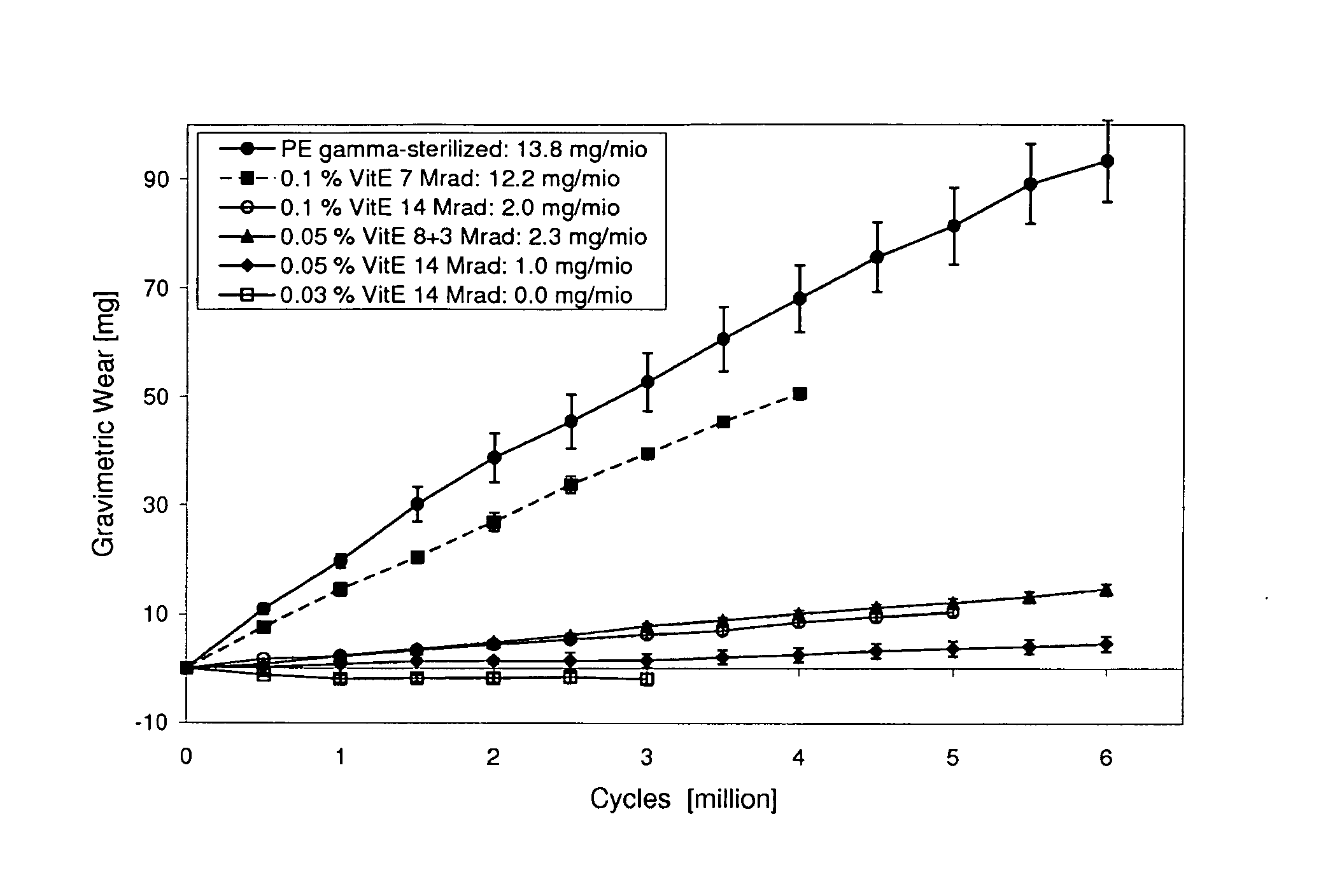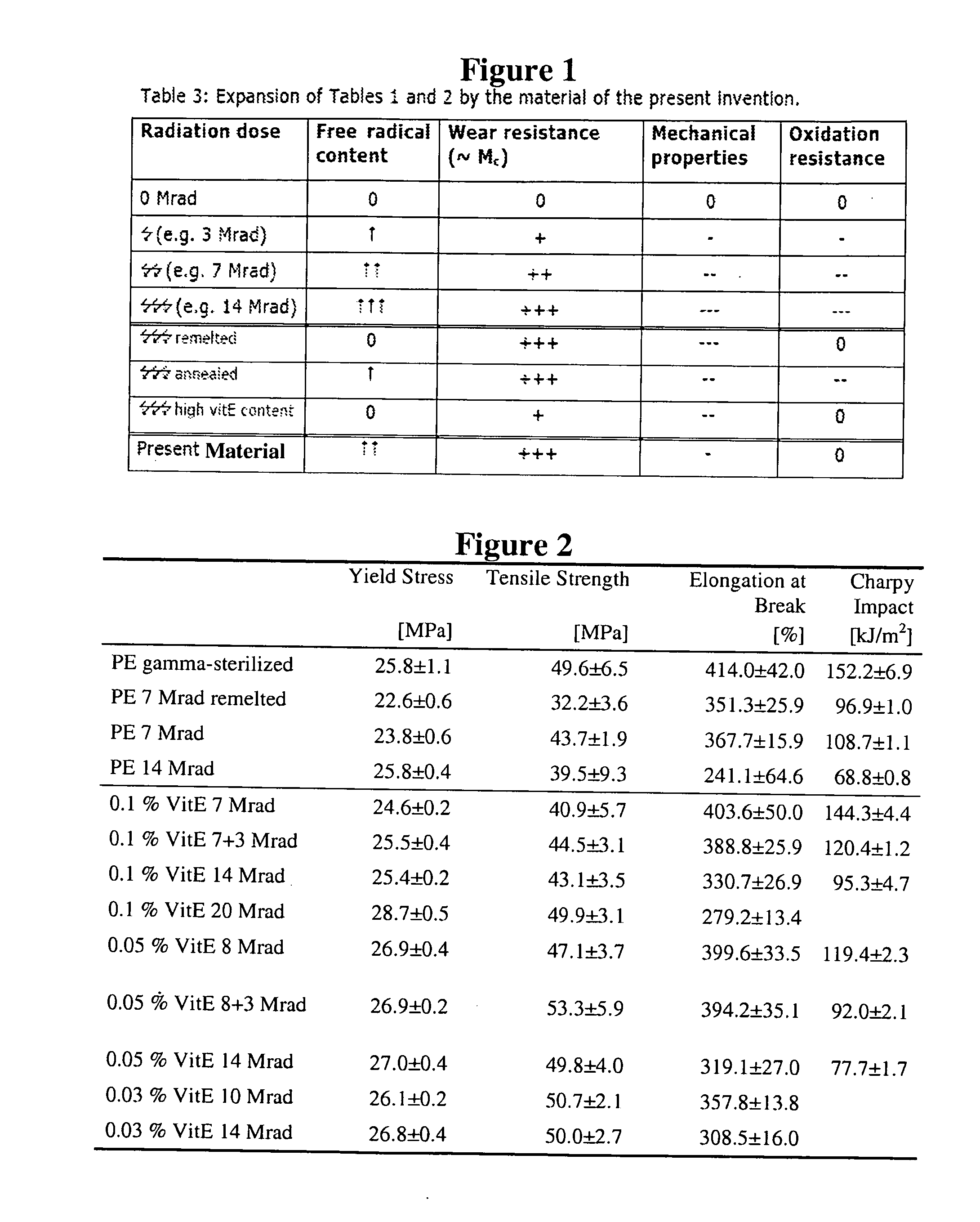Ultra high molecular weight polyethylene for bearing surfaces
a technology of polyethylene and bearing surface, applied in the direction of prosthesis, impression caps, instruments, etc., can solve the problems of limited maximum lifetime of implant systems, osteolytic response, local bone resorption
- Summary
- Abstract
- Description
- Claims
- Application Information
AI Technical Summary
Problems solved by technology
Method used
Image
Examples
Embodiment Construction
[0050]The material of the present invention provides a combination of wear resistance, high oxidative stability and improved mechanical properties for an artificial joint bearing surface. Initially, trace amounts of vitamin E have been added to the UHMWPE powder. As shown in FIG. 1, Table 2 is expanded by the material properties of an embodiment of the present invention. As shown in FIG. 1, this embodiment has decreased free radical content and increased wear resistance while maintaining oxidation resistance while reducing mechanical property losses as compared to gamma irradiated only, annealed, remelted, and high vitamin E content.
[0051]Embodiments of the present invention provide an UHMWPE material comprising an easy, facile production process through introduction of vitamin E into UHMWPE powder prior to sintering. The production process is also facilitated by irradiation in air, which minimizes the need for a complicating protective environment.
[0052]Embodiments of the present i...
PUM
| Property | Measurement | Unit |
|---|---|---|
| elongation at break | aaaaa | aaaaa |
| tensile strength | aaaaa | aaaaa |
| yield stress | aaaaa | aaaaa |
Abstract
Description
Claims
Application Information
 Login to View More
Login to View More - R&D
- Intellectual Property
- Life Sciences
- Materials
- Tech Scout
- Unparalleled Data Quality
- Higher Quality Content
- 60% Fewer Hallucinations
Browse by: Latest US Patents, China's latest patents, Technical Efficacy Thesaurus, Application Domain, Technology Topic, Popular Technical Reports.
© 2025 PatSnap. All rights reserved.Legal|Privacy policy|Modern Slavery Act Transparency Statement|Sitemap|About US| Contact US: help@patsnap.com



